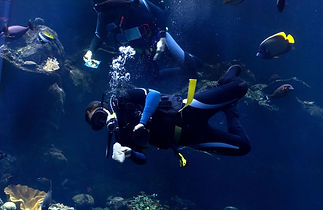top of page
Our Blog
Our Blog
An ongoing series of Hot Topics
An ongoing series of Hot Topics
Are you doing these 5 steps to properly prepare
Are you doing these 5 steps to properly prepare
September 24, 2019
“It’s not life or death” I was once told about managing my Project. Well, what if it
was? Would I change the way I manage my projects? Would I put more emphasis on
preparing and planning? Of course, I would.
Before becoming an active diver, I would have thought I’ve done all I could for project
preparation, but now through the teachings of diving – which is indeed life or death – I
am very much focused on proper planning and these 5 steps.
- Selecting a buddy – Having a buddy for diving is imperative and in this world of Project Management this is also true. Your buddy dives with you and can save your life in the event of an emergency. Your buddy in the Project Management world is your champion, someone on the project team who supports your vision for the project and helps drive the project forward. They could be your sponsor, your business lead or key team member on the project. Without a buddy, the risk is death.
- Establish a dive objective – Having a goal for the dive is the whole reason for doing the dive in the first place. It could be to explore a sunken ship, fish and coral reef, or even to find underwater treasure. Likewise, having a clear project objective will help you, as the PM, and your buddy focus the team on the purpose of the project and what it aims to achieve. Whether it’s to implement a new process or technology or to change the culture of the organization, the objective needs to be clear and clearly understood.
- Choosing a dive site and alternate – Diving without choosing a dive site is the most dangerous thing a diver could do. I need to choose these so that if the conditions are not favorable (i.e. poor visibility, too strong of a current, etc.), I will be able to go to the alternate site and still have a successful and safe dive. The same is true for project scope. For a project to be successful, we not only need to know what it is we are delivering, but also to have proper risk management in place to deal with the unexpected and to have contingency plans. If we move forward with a project and have it planned as everything will be perfect, the project will be in danger.
- Determining best time to dive – Choosing the best time to dive is also key, as water typically changes throughout the day (i.e. better visibility early in the morning vs prime time, current changes based on weather, etc) and if deciding to dive at night, special training and equipment will be needed. In similar manner, choosing the best time to deliver a project is important. A project may need to be completed by a certain date mandated by legislation or to align with a key event requiring high levels of security. Regardless of the project, choosing the best date and even time is key.
- Discussing logistics and follow the plan – Reviewing these preparation steps with your buddy is mandatory, not only for safety reasons but also for getting the most enjoyment and success from your dive. In the world of projects, this is also mandatory. Review all these preparation steps with your buddy so they can champion the project and support you along the way. Also, share this with your project team and stakeholders so that at the end of the day, everyone is working towards achieving the project objectives and having a successful project.
Now, if you were about to venture onto to your next project, will you think about
how well you’d plan a dive and see what type of changes you will make?
© Copyright KT CONSULTING INC, ScubaPM
bottom of page
